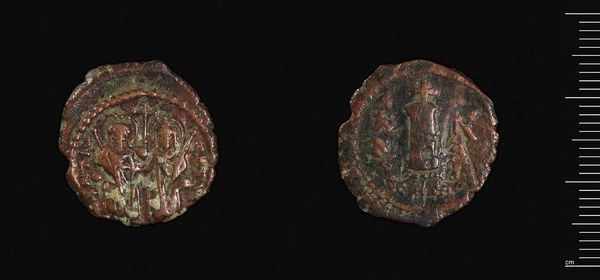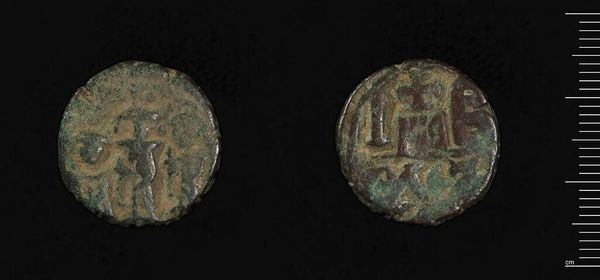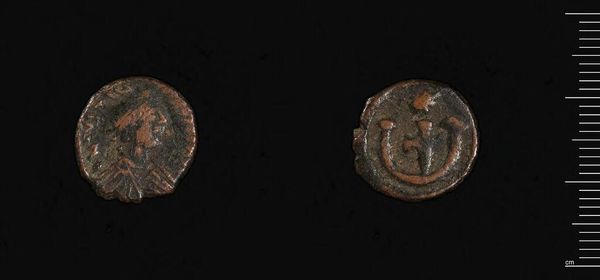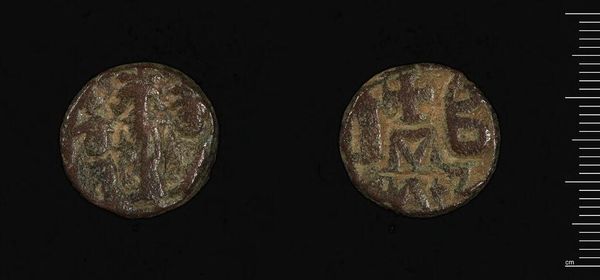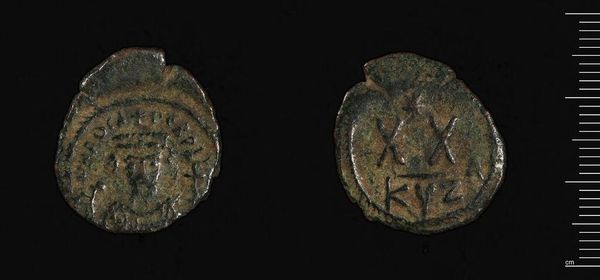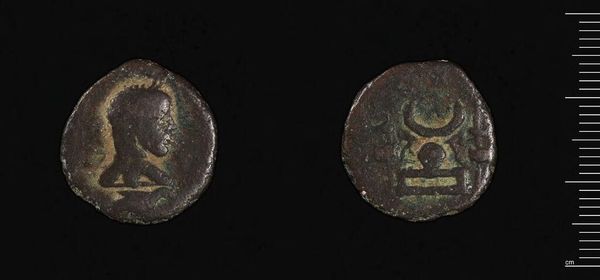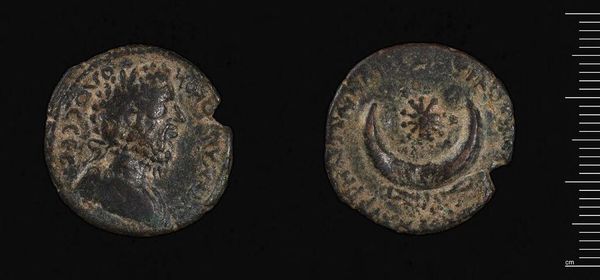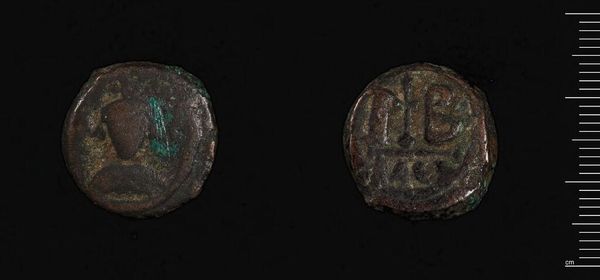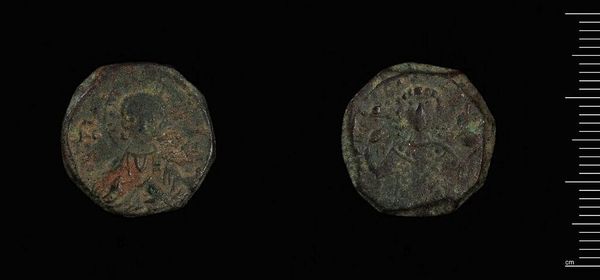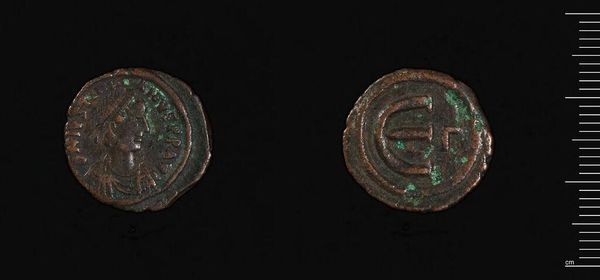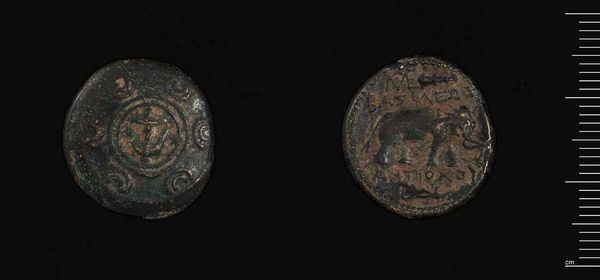
Coin of Maurice Tiberius c. 593 - 594
Dimensions: 12.07 g
Copyright: CC0 1.0
This bronze coin, weighing just over 12 grams, was minted during the reign of Maurice Tiberius. As with all coins, its creation began with the careful selection and preparation of metal. The bronze would have been heated and hammered into thin sheets, then cut into small, uniform blanks. The designs we see here, including the emperor's portrait and the inscription, were engraved onto dies. These dies would then be used to strike the coins, leaving a lasting impression of power and authority. The physical qualities of the coin – its weight, size, and material – all speak to its value as a medium of exchange, while the imagery and inscriptions reflect the political and cultural values of the time. Ultimately, the coin represents a fascinating intersection of material, process, and social context. It reminds us that even the most functional objects can be rich with meaning, challenging our traditional understanding of art and craft.
Comments
No comments
Be the first to comment and join the conversation on the ultimate creative platform.
